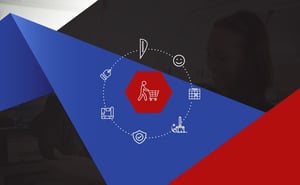If you’re a retailer, the end goal of your business is the customer, and they always will be. After all, it’s their buying that simultaneously pays for your supply while creating demand. That said, it’s critical to understand who they are and why they are buying. That is so you can continuously impress them and keep them happy.
However, it’s not going to be easy. The mindset of the modern-day shopper has changed and impressing your customers is a bigger challenge than ever before. What worked 10 or 20 years ago won’t have the same effect today. But that doesn’t mean you can’t do it.
So how can retailers consistently impress modern shoppers?
1. Outstanding customer service and product knowledge
If your store doesn’t provide outstanding customer service, you’re effectively working against everything you’re trying to achieve. You may have excellent products at competitive prices, but if your customer service is poor or even non-existent, you might as well close up shop.
That may sound melodramatic, but it’s a reality. Poor customer service puts a damper on the whole shopping experience and can kill your brand quicker than any faulty product that you stock. Don't think so? Then consider the stats in an infographic around customer loyalty. Created by Fieldboom, it pointed out that 52% of consumers have switched providers in the past year due to customer service. Meanwhile, because of poor customer services, companies can lose as much as 71% of their consumers.
And then there is the need for you to have in-depth product knowledge.
Intrinsically linked to customer service, product knowledge can mean the difference between impressing your customer or leaving them bitterly disappointed. For example, if a customer arrives in your store undecided about which product to buy, they’ll naturally turn to a salesperson.
If your salesperson doesn’t know why one product is better than another and can’t educate your customer on the differences about each, any sale they attempt to make becomes mute. That is because there is no sound reasoning behind the purchase.
2. A excellent range of products that are always in stock
While some people will complain that the retail market is overcomplicated and oversaturated, it's still important to have a variety of products.
For example, if a shop only has one type of printer, you aren’t necessarily going to buy it. That is unless you have no other choice. Instead, you’ll likely look around at other stores where you can compare three or four different brands simultaneously. And those stores with more product options will win out every time.
Mind you; there is a limit to how many products you should offer. Offer too many, and you’re likely to have stock on your shelves for longer than you want. You’re also likely to overwhelm your customer with too many options.
Another scenario that is just as bad, if not worse than overwhelming your customer with too many products is not having any in stock. This can be due to a number of factors including poor planning on your part or not using the correct data to populate your planograms.
Whatever your reason for not having a product in stock is though, it's not sufficient. You’re meant to be impressing and pleasing your customers. There are few things more frustrating than walking into a store and finding that what was advertised is not available.
3. An easy to navigate store with a logical category flow
The way in which you layout your store plays a huge role in helping your customers to know where to find your products. The easier it is to navigate your store, the better the experience for them.
A well-planned space also helps to draw your customers in and persuade them to continue to shop in your store. The type of retail fixtures you use helps here too as well as how you make use of them.
As mentioned in one of the blog articles in the previous paragraph, as soon as your customer enters your store, they are on a journey, and you want to make it as enjoyable as possible. Planning your store’s space will help you achieve that.
But that’s not where it ends. While the layout of your store needs to be easy to traverse, there is also the fact that you need a logical category flow. Without it, you’ll have messy shelves scattered with products in no particular order. You may even have a few gaps here and there.
And then there’s also the bigger issue any shopper will face: they can’t find what they’re looking for.
4. Sales and promotions and stimulating the senses
Considering that your goal as a retailer is to impress and please your customer, one obvious way of doing that is to have regular sales and promotions.
A sale or promotion has a funny way of increasing your sales, even if it’s just to get rid of old stock or promoting a product for a short period of time. It’s because they make you feel like you’re getting that little bit extra for your money.
Also, bearing in mind that the cost of living has skyrocketed, giving your customers the opportunity to save on certain products can ease any financial burdens.
As a retailer, you should also not forget about selling your products using your customer’s senses. For example, if you’re a bakery, use that to your advantage by having freshly baked bread close to the entrance of your store.
Conclusion
Impressing any shopper who enters your store needs to be among your top priorities. If it is, you’ll undoubtedly see the rewards such as higher store foot traffic, more profit and happier customers. However, fail to take action on any of the above and you can expect the exact opposite.


